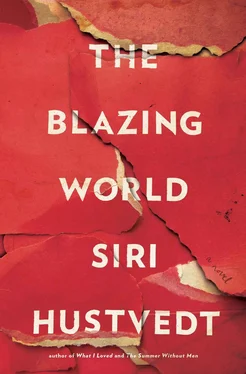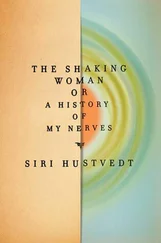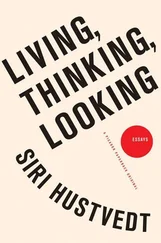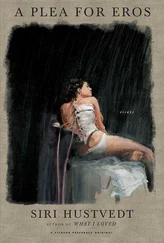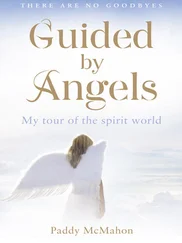It’s not my way to be sticky, so I batted her off with a josh and a jest, and she laughed. But alone in bed, I remembered her words, and I remembered Devereaux Lewis, his hand on my head and his knee in my back, pushing my face in the dirt, moaning faggot, pansy, fluff . And Letty, with her big, tearful eyes, staring at me afterward. I should have smashed his head in, but I was too noble and too fearful. And then I saw myself lying in my bed jerking off to those dream boys in my head, and the God guilt, and the loneliness. Harry had been another one, not a homo, just a lonely kid. She had liked her mother and I still liked mine — conflicts notwithstanding. At least she had known her father. Mine was a fantasy man, a row of facts I shuffled around like cards. White boy orphaned at ten; ward of the state; made good, studied accounting in college; fell for Mama, ambitious nursing student, married, divorced, died.
The box had to open, open very slowly, a little more in each room. We discovered later that the bulk of our visitors didn’t even notice the change until about the fourth room. Harry knew there had to be a body in there, a being trying to get out. The “emergence” had humor, but it was dark humor. We called the being “it” and “the demon” and “the hungry child.” Harry drew and drew, trying to find its face, its body, its look. The metamorphs were big, goofy-looking, lumpy things, who sat at their tables in all seven rooms with only minor changes in their positions, but the little one, according to Harry, had to come from “another plane of existence.” Wax. She decided on beeswax. She was inspired, she said, by several sources — the bizarre anatomical wax sculptures of La Specola Museum in Florence from the eighteenth century, with its skinned and opened bodies that displayed systems and organs, the sacro monte above Varallo with its lifelike figures, and Japanese ghost-scroll images. Because she did not want the person to look like an alien in some 1950s sci-fi film, the model became more and more realistic: skinny, eerily transparent (liver, heart, stomach, and intestines just barely visible), hermaphroditic (small breast buds and not-yet-grown penis), frizzy red human hair. The creature is strangely beautiful, and when you see him/her in the seventh room out of the box, standing on a stool to look out the window, or rather into the mirror, you can’t help feeling touched somehow. The really large (by now) metamorphs have finally noticed that the personage is out and have turned their heads to look at it.
What does it mean? That’s what they asked me when the rooms were exhibited. It means what you feel, I said, whatever you feel. It means what you think it means. I was cryptic. I put on a mask, not literally, but one of my actor masks, a persona. It was a great role because it mixed me with Harry. I even took on some of her gestures for my gig in the theatrum mundi . When Harry waxed philosophical, she fluttered her hands and sometimes curled her right fist and punched the air to give her point zing. With a few borrowed gestures from Harry, a modified accent, less Virginia, and an altogether butchier me, P. Q. Eldridge strode into the art world.
Harry knew whom to schmooze. She knew where to go and where to send me. She introduced me to the right people at “art” parties, gallery owners and collectors and critics I charmed and chatted with, and I made her connections mine. It isn’t a “nice” world, but then, no world is. I did meet some artists I still see, people who turned into friends; but, all in all, the scene made me think that the Frenchman Honoré de Balzac had it right: the grubby human comedy. Illusion upon illusion upon illusion. It was all names and money, money and names, more money and more names.
I met Oswald Case, now author of the sensational real-life thriller Martyred for Art , at several openings, a midget, poor guy, not a true little person, but he topped off at about five-two, I’d say. Full of himself. Bow tie. Every time I met him he told me about Yale, Yale this, and Yale that. And movie stars. Steve Martin. He knew Steve Martin; what an eye he has, so sure. “He owns a Hopper, did you know that?” No, I didn’t know. “The price? Millions.” (I have forgotten how many millions.)
“Yes, my husband and I have been collecting for years now,” a woman in a Chanel suit told me. “We just bought a Kara Walker.” (The idea here: Tell black artist about another black artist.) “Her work is soooo powerful, don’t you think?” “Yes,” I said, “I think so.” “We’re eclectic, you see,” she said, before her head swiveled toward a known person across the room, called to him, “David, dear! Excuse me, I see a friend, sooo nice talking to you.”
And so it went. I had fun and I had boredom. For Harry, it was more complicated.
It was true they didn’t want Harry the artist. I began to see that up close. She was old news, if she had ever been news at all. She was Felix Lord’s widow. It all worked against her, but then Harry scared them off. She knew too much, had read too much, was too tall, hated almost everything that was written about art, and she corrected people’s errors. Harry told me she never used to set people straight. For years she had sat by, silently listening to people mess up references and dates and artists’ names, but by then she had had it. She said she had been released by Dr. F., a figure I began to think was an invisible man behind Harry. Harry credited the invisible man with permission. She now permitted herself to say what she had suppressed earlier: “I think you mean so-and-so,” she would say, and people inevitably gave her that and-who-are-you? glance. Some of them fought back, telling her she was wrong — and then the battle started. Harry had stopped backing down.
But Harriet Burden’s status rose, anyway, not as an artist but as a player in the who’s-somebody-and-who’s-nobody game of New York City. She had hidden from “all that” since Felix Lord died, had shunned the whosits and whatsits, the dukes and duchesses of moolah, the muckety-mucks with acquired tastes. But now she was back in it, not as Felix Lord’s “hostess by marriage” (Harry’s phrase) but on her own. The whosits and whatsits liked Harry as a promoter, liked her as a rich champion of young, talented artists, and as a collector. (No one knew that her first “discovery,” Anton Tish, had absconded. They guessed he was hard at work on another show.) Harry played the part. She put on her own mask, and once it was on, she got better at the role, more confident. It suited her. In fact, she was more truthful. “I thought that article was complete rubbish,” she told a woman who had carefully marked her copy of Art Assembly with Post-its. And she started buying art, mostly by women. It’s brilliant, she said about a canvas by Margaret Bowland, and it’s a bargain.
“Hats, Harry,” I said to her one Sunday afternoon at the lodge.
“Hats?”
“That’s what you need.” I told her that she should always make her entrance with a hat. She groaned over this suggestion as too pretentious, too absurd, but then I bought her one, a taupe fedora, and she looked wunderbar , as Dieter likes to say, and so H.B.’s signature look was born. She came to like the headwear. “It covers up my unattractive mind,” she would say; “all those unpleasant ideas nobody wants to hear me talk about.”
But, you see, Harry was free to comment on her own work as if it belonged to me, and she knew just what to say. She wasn’t putting herself forward, after all. She was speaking up for P. Q. Eldridge, that “highly interesting” performance artist who had branched out into another medium. “He stages mysterious stories,” she would say, smiling, “visual elaborations of his work as a performer.” And she could push Ethan. “You should read the article about Phinny’s act in The Neo-Situationist Bugle —the cultural construction of race and gender and ambiguity as the ultimate subversion, fascinating.”
Читать дальше
